You will need:
- 100mL of Vinegar
- 4 Tablespoons of bicarbonate soda mixed with 150mL of water + 10mL of detergent (a few squirts)
- A few drops of orange or red food colouring
- A 500mL container
- And for a more realistic-looking volcano, brown coloured play dough
NOTE: This is a fun activity that models lava flowing out of a volcano, designed to be an engagement activity. If using this for teaching, couple this with animations on how real volcanos erupt (see discussion below the instructions).
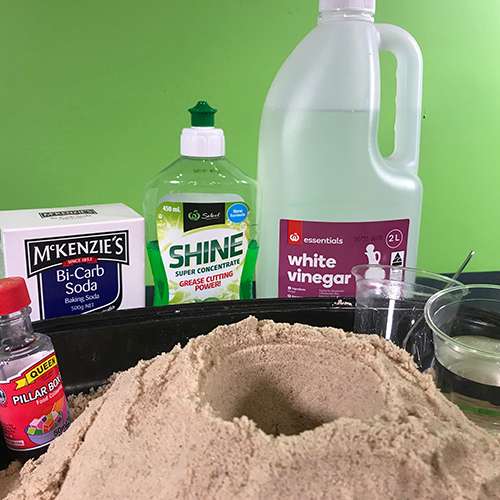
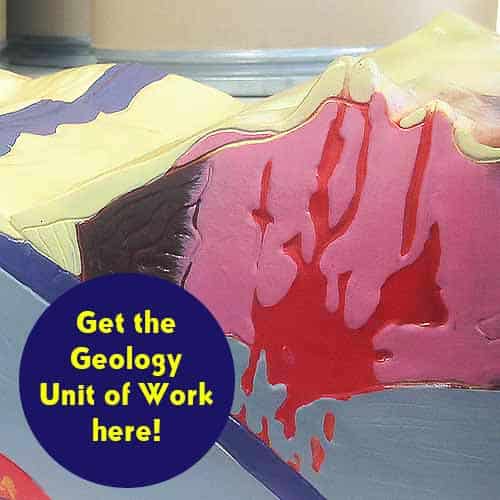
Get the Unit of Work on Geology here!
- The Earth’s layers, the rock cycle, volcanoes, earthquakes & more!
From soil science to mineral testing, these hands-on experiments your students will discover the importance of natural resources and the role of plate tectonics in shaping our world.
Includes cross-curricular teaching ideas, student quizzes, a sample marking rubric, scope & sequences & more
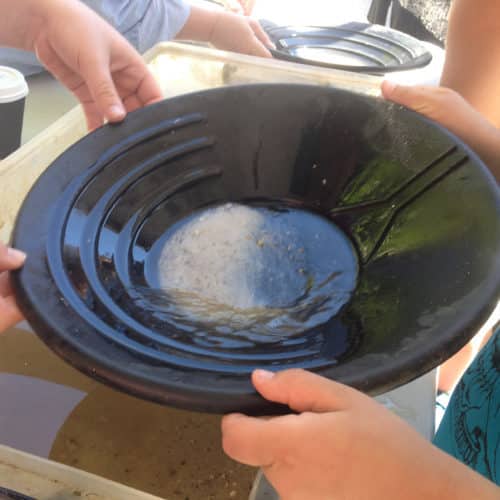
School science visits since 2004!
– Curriculum-linked & award-winning incursions.
– Over 40 primary & high school programs to choose from.
– Designed by experienced educators.
– Over 2 million students reached.
– Face to face incursions & online programs available.
– Early learning centre visits too!
Why Does This Happen?
On volcanoes…
Teaching tip: The above science activity is simply a visual representation of a volcano. Of course, you need to go further and discuss how real volcanoes erupt!
You don’t want to leave a misconception behind with your students
The Continental Drift theory put forward by Alfred Wegener in 1912 describes the Earths outer layer, the crust, as being made up of giant ‘plates’ that drift apart and together over millions of years. These plates, now known as tectonic plates, sit on the outer mantle of the Earth known as the asthenosphere. The asthenosphere contains solid rock that moves like a very slow fluid over geological time because of enormous pressures within the Earth. The movement of the asthenosphere carries the tectonic plates together and apart.
It is along these divergent and convergent plate boundaries where earthquakes and volcanic eruptions mainly occur, as well as mountain and ocean trench creation. Some volcanic eruptions are explosive and some are not. This is dependent on how viscous (or thick) the magma is, as well as the amount of gases present within the volcano.
- Runny magma erupts through openings or vents in the earth’s crust before flowing onto its surface as lava. Once magma has erupted from the volcano it is called lava, which can be between 700oC and 1200oC.
- Thick, viscous magma can trap gases within the magma. This can cause a dangerous situation where by the build up of pressure can cause the volcano to erupt violently.
Other areas for volcanic activity are ‘hotspots’ far from the plate boundaries. These are areas where the hot magma from the outer mantle has melted the crust, forming a vent for a volcano to form.
Why does the bubbly reaction happen in your activity?
Reacting vinegar and bicarbonate soda together produces carbon dioxide and water.
The reaction is as follows
Vinegar + Bicarbonate Soda —> Carbonic Acid + Sodium Acetate
The carbonic acid is unstable though, so it breaks down into liquid water and carbon dioxide as a gas, causing the massive ‘build-up’ of pressure you saw in the experiment.
The water is left in the vinegar solution whilst the carbon dioxide rises, causing the bubbles to expand the detergent upwards and out of the volcano model.
Variables to Test
A science experiment is only an experiment if you change one thing and measure the effect!
The following are some variables you could control (make sure that you keep everything else the same)
- The amount of vinegar that you use. You could dilute the vinegar too!
- The amount of bicarbonate soda that you use
- Does it make a difference if you use different amounts or types of detergent?
- Can you vary the size of the crater?
From the rock cycle to volcano formation, we’ve got your geology unit covered!
Get in touch with FizzicsEd to find out how we can work with your class.
Geology Rocks!
Years 1 to 6
Maximum 30 students
School workshop (NSW & VIC)
60 or 90 minutes
Online Class Available
STEM Full Day Accelerator - Primary
Designed from real classroom experiences, this modular day helps you create consistently effective science learning that directly address the new curriculum with easily accessible and cost-effective materials.
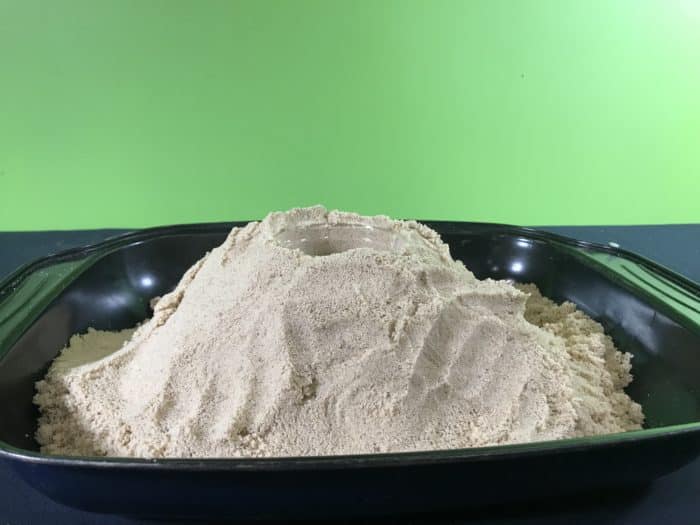
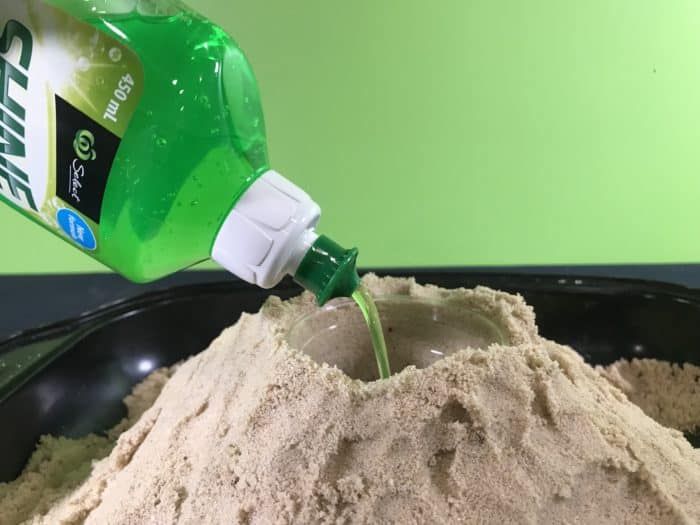

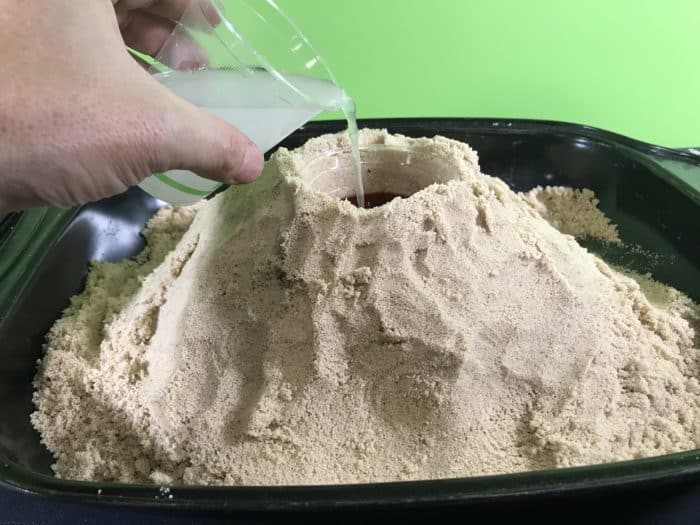
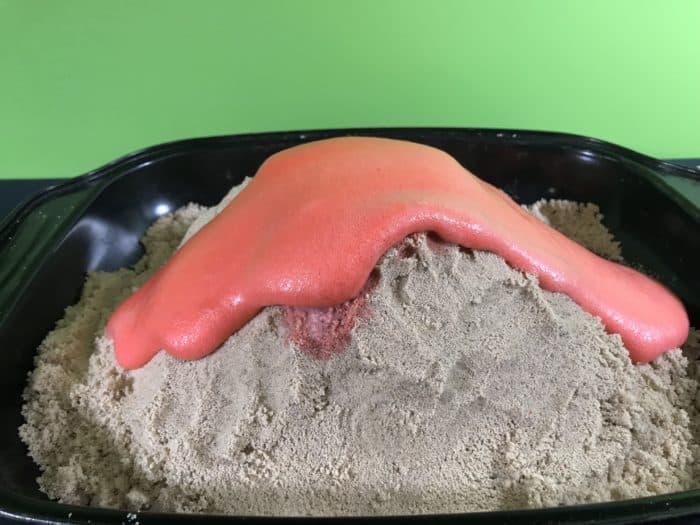


























Comments